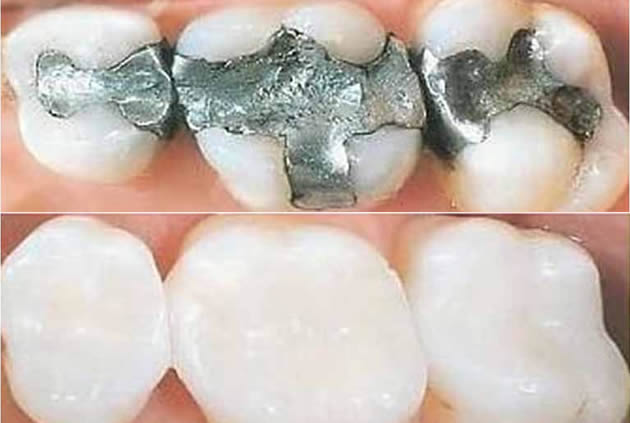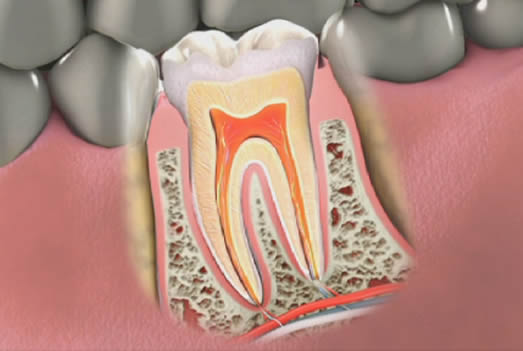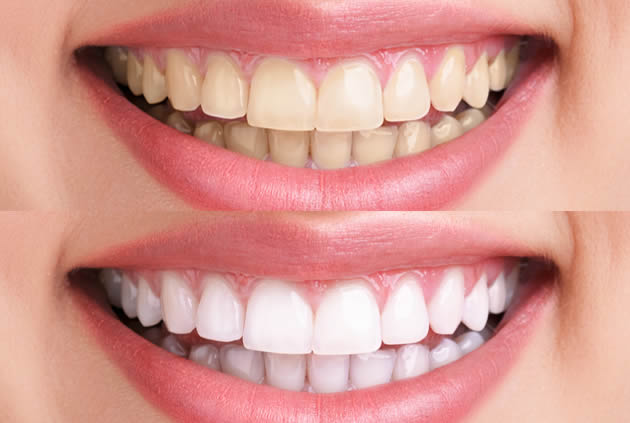
The goal of root canal therapy is to relieve pain, not cause it. The pain you experience before a root canal is the result of damage to the tissues in the tooth. Root canal therapy removes that damaged tissue, therefore relieving the discomfort you feel. If you are still experiencing tooth pain after undergoing a root canal procedure, it could be an indication of a problem with the treatment.
While mild discomfort is to be expected during the root canal healing process, if the pain continues or becomes more severe, it is likely an indication of a problem. There are several reasons for tooth pain after root canal treatment:
- The tooth has an extra canal that was not cleaned and filled, meaning there is an extra physical root.
- The tooth has a small, tight accessory canal that is difficult to locate on x-rays or hard to access with the necessary tools.
- The tooth is fractured due to the damage and weakened state caused by the original decay and the access cavity that is created to begin the root canal treatment.
- The root canal has become reinfected.
- The small files used by your dentist to clean out the pulp of the tooth sometimes break, resulting in a failed root canal treatment.
In the days immediately following root canal therapy, it is normal to experience some tenderness of the tooth or surrounding gum. This discomfort should be easily managed with over-the-counter painkillers and should subside in a few days. If the pain does not ease in a few days or becomes more severe, contact your dental professional immediately to access your symptoms and determine if you are having root canal complications.
Schedule your appointment at our Baltimore dental office

An endodontist is a dentist who has undergone additional training specializing in saving teeth through treatments that involve the pulp and root of teeth. If you have been diagnosed by your family dentist with an infected tooth that requires root canal therapy, it would be logical to seek treatment by a dental professional who is specifically trained in root canal procedures. To find a qualified endodontist for your root canal treatment, consider the following:
- Ask for a referral from your family dentist to an accredited diplomate of the American Board of Endodontics. You may also consider asking friends and family members who have undergone root canal therapy for recommendations of endodontists.
- Inquire about the extent of the endodontist’s education and training as well as the number of root canal procedures they have performed. You will want to look for a doctor with an established practice and extensive track record of root canal experience.
- Find out what type of equipment the doctor utilizes to ensure they are up-to-date on the most recent advances in endodontic therapy and dental technology.
- Ask about the sedation and pain-relief options the endodontist provides for root canal patients.
- Evaluate the endodontist and staff to determine if they make you feel comfortable, welcome, and are able and available to answer your questions.
Root canal treatment can be a stress-free and painless experience when performed by the right dental professional. Taking the time and effort to identify a qualified endodontist will help to ensure the ease and success of your procedure, and soon have you back on the road to a healthy smile.
Root canal dentist in Baltimore

Endodontics is a dental term often linked to a more common dental procedure you’ve probably already heard of called root canal treatment. Endodontics focuses on the pulp of your tooth, which holds nerves and blood vessels supplying nutrients and oxygen to your tooth. When the pulp is infected or injured, endodontic treatment may be performed to save the tooth.
During endodontic treatment, the hollow part inside your tooth is cleaned, disinfected, and filled. It is often the best way to save a tooth that has been damaged by decay, trauma, or other causes. Common symptoms that endodontic treatment is necessary include pain, tooth sensitivity, or exposure of the pulp due to tooth fracture.
After examining your tooth and X-ray results, your dentist will recommend the kind of endodontic treatment you need based on how seriously the pulp is impacted. One type is called vital pulp therapy, which has a goal of preserving and protecting your tooth’s pulp. This procedure involves removing only the pulp from the crown of your tooth and not from the root. It is only advised when there is no swelling or abscess present, and the tooth is secure.
Another type of endodontic treatment is non-vital pulp therapy, which is known as root canal treatment. It is performed when there is no chance of saving the pulp of your tooth. The whole pulp will be removed from inside your tooth, and the canals will be cleaned and filled with a special material. Then a stainless steel crown will be placed on the tooth.
Sometimes endodontic treatment is not recommended, and the tooth needs to be extracted instead. This choice depends on factors such as tooth location, age of the tooth, extent of damage, and the patient’s overall health. Your dentist will be able to advise you on the best treatment for your condition.
Schedule your appointment at our Baltimore dental office













